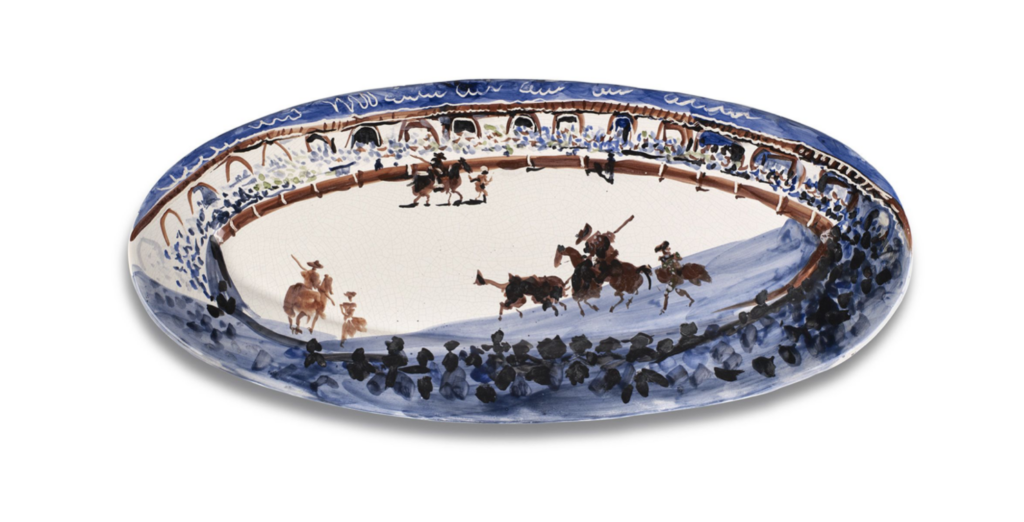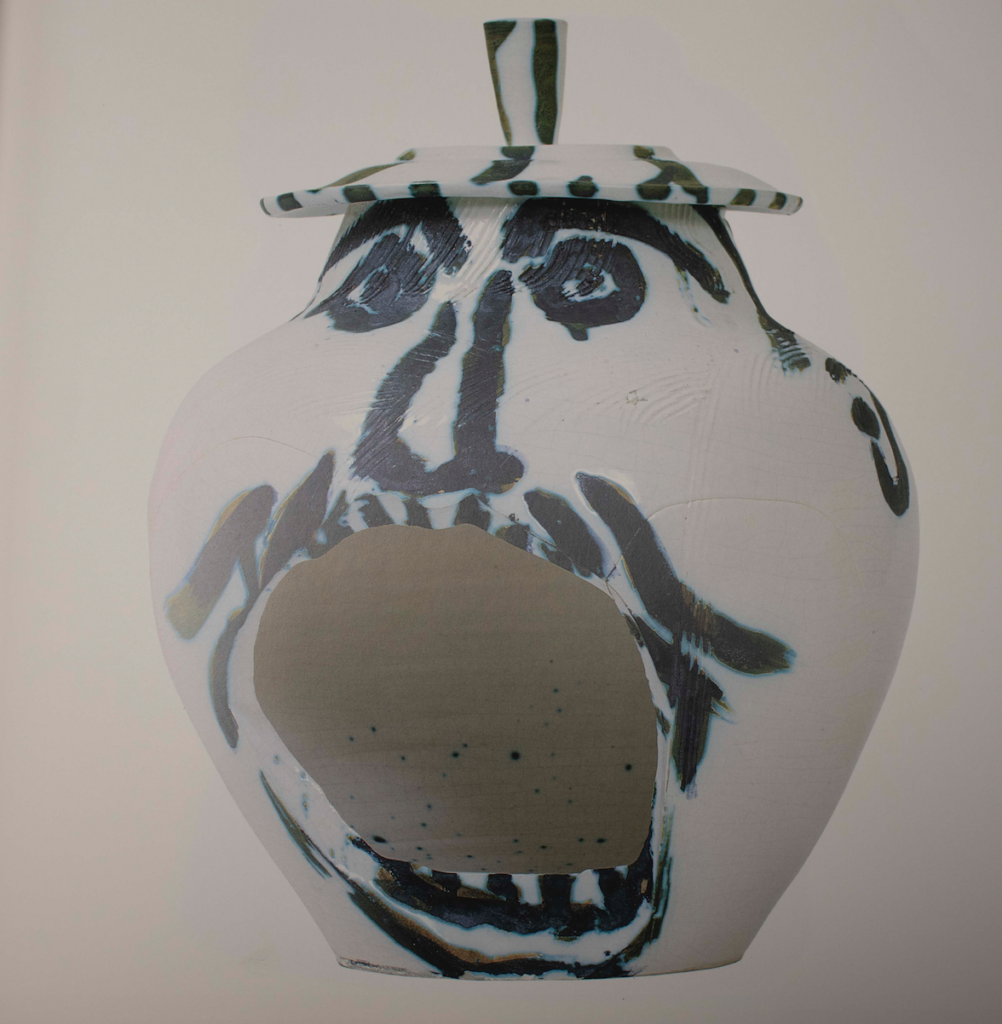While working with the Madoura studio, Pablo Picasso produced over 4,000 ceramic pieces. He experimented with numerous formal techniques, as well as a varying range of subject matter. Picasso’s pottery can range in value from $2,000 – $80,000. However, the more rare or unique pieces can range from $100,000 to $1,000,000. Nearly every piece is accompanied by over a hundred editions (the exact number is often painted on the underside of the piece). We are now poised with the fortunate issue of gathering these thousands of masterpieces. Their location can range from the Musée Picasso in Paris, to a flea market in the Basque country.
Get to know Picasso’s Subject Matter
Having resigned himself to a quieter life in the Cote d’Azur, Picasso was interested in illustrating his natural environment. Birds, fish, bulls, and owls were all consistent characters of inspiration. Becoming nostalgic for his own Spanish heritage, however, Picasso generated a series of images based on La Corrida (The Bullfights). He paints the arena in the style of the Plato Engaño; which is essentially a ceramic image in the style of tromp l’oeil. The shadows along the border of the plate, create depth within the image where there is none. The genius of this piece is the illusion of its perspectival depth. The skyline above the arena shifts the center of the arena from the center of the plate. Suddenly the functional shape of the plate becomes unclear while la corrida appears three-dimensional, engaging, and dynamic.

oval platter (press moulded)
white earthenware, painted with oxides, crackled glaze ground
29 x 65 cm
20. 4. 51
Photo by Eric Baudouin
As was typical for the red-blooded Spanish artist, his work was often inspired by a feminine muse taken from his personal life. During his early years working in Vallauris, he focused on generating abstract portraits of his partner, Francoise Gilot. However, after a schism between the pair, Gilot leaves the Cote d’Azur. Miss Jacqueline Roque, Picasso’s newest love interest, takes her place as the central feminine muse. If you are in possession of a ceramic piece that seems to be inspired by the feminine form, it will be useful to investigate who it is. Picasso’s tanagras, which often depict a woman with long, dark hair wearing a sari, are portraits inspired by Francoise Gilot. Jacqueline Roque has a softer face and is generally a more common muse throughout his ceramic collections.
Observe Date Stamps and Inscriptions
Nearly every authentic Picasso ceramic is dated and often labeled. Common stamps include; ‘Madoura Plein Feu’, which indicates that it was made in the Madoura workshop. ‘Empreinte Orginale de Picasso’ is an identification of the process Picasso used to make his work. ‘Empreinte Orginale’ suggests he transposed an established image onto a new piece of clay. Additionally, it was common for Picasso to simply label his pieces, ‘Edition Picasso’. The date indicated is crucial in order to authenticate your piece. We have diaries and other known records marking Picasso’s transitional interest in subject, style, and technique. Therefore, a ceramic tile of a faun head, we know would not have been created during the winter of 1950, for example. The date is often quite conspicuously located in the lower or top corner of the tile. If not, it may be on the underside or inside of a pitcher or vase. Picasso both inscribed the date into the clay and painted it, so be sure to be on the lookout for either method.
Make Note of the Condition
While experimenting with a modernist approach to his pottery, Picasso would allow his pots and pitchers to fold or break under his hands. Instead of trying to correct the mistake, he would embrace the piece’s irregularity. As in Head in the Shape of a Pumpkin, Picasso enhances the mistake. The opening becomes a screaming mouth. In this sense, it is important for the collector to be aware of the potential intention behind any damages done to the object.

Round Vase with Lid (Madoura Shape)
white earthenware, thrown and assembled, cut, raked, printed with oxide, wax resist, white glaze
39 x 31 x 32 cm
Undated (1953)
Photo by Eric Baudouin
Collectors should also note, however, the potential damages caused by either transportation or age.
Consider Your Final Product
If you are in the process of developing a collection, it is important to keep in mind an overarching sense of aesthetic continuity. You will want to find pieces that mesh well together, either in terms of color palette, style, or subject matter. For example, a few ceramic tiles of faun heads would go beautifully with several images of la corrida. Due to their similarity in style, a pitcher inspired by the image of a bird might match with a prized Jaqueline Roque pitcher.
It may also be necessary to consider the physical presentation of your collection. Picasso’s ceramics tend to be on the atypical side, in terms of shape and size. There are often protruding elements to his pieces that may affect the object’s placement in the home or viewing space. If you are working with shelving, it may be in your best interest to focus on his plates, tiles, and bowls.
An easy way to curate a collection of Picasso ceramics is by color palette. Living along the French Riviera, Picasso was drawn to bright blues in order to portray a wide variety of subject matter. Painted in blue, the face of his Jaqueline Roque, a fish, and an abstract patterned plate could all work wonderfully together as a collection.